You have a brilliant product design, but the thought of finding a reliable manufacturer in a country as vast as China feels overwhelming. You’re worried about quality control, communication barriers, and simply not knowing where to start looking. What if you could confidently navigate the landscape and find the perfect partner for your project?
Yes, you can get custom injection molded parts from many places in China, but the best suppliers are not scattered everywhere. They are concentrated in specific industrial clusters. The Pearl River Delta, with cities like Shenzhen and Dongguan, and the Yangtze River Delta, including Shanghai and Ningbo, are the two primary hubs. These areas offer a complete supply chain, skilled workers, and decades of experience, making them your most reliable choice for high-quality custom parts. Your project’s success starts with choosing the right region.
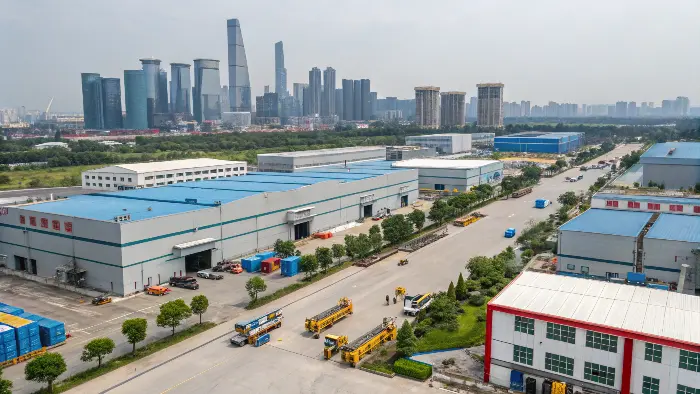
Finding a supplier is one thing; finding the right supplier is another. I’ve spent my entire career in this industry, first on the factory floor and now running my own company. I’ve seen firsthand how choosing a partner in the right industrial ecosystem can make all the difference. It’s not just about one factory, but the network of material suppliers, toolmakers, and logistics experts that surrounds them. Let’s explore what makes a region, and a country, the right choice for your specific needs.
Which country is best for injection molding?
Choosing a country for your injection molding project is a major decision that impacts your budget and product quality. If you pick the wrong location, you could be stuck with high costs, poor craftsmanship, or frustrating delays. Knowing the strengths of each major manufacturing country helps you make the smartest choice for your business.
There is no single "best" country that fits every project; the ideal choice depends entirely on your priorities. China often provides the best balance of low cost, massive production capacity, and reliable quality, especially for consumer goods. The USA and Germany lead in high-precision, complex molds for the medical or automotive industries. Taiwan is a great middle-ground option, offering excellent quality at more reasonable costs than the West. Your project’s complexity, volume, and budget will point you to the best country.
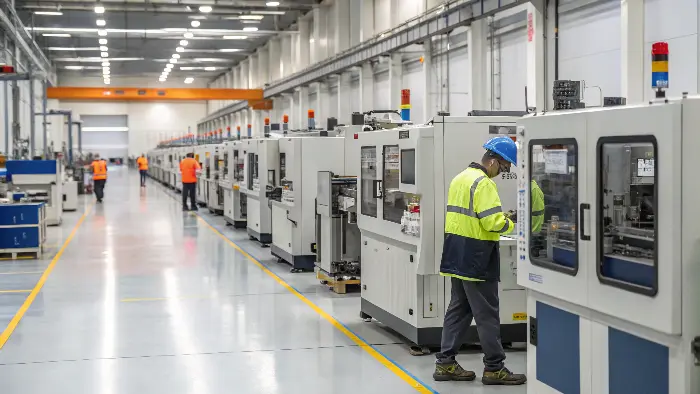
When I first started my trading company, I had clients asking me this question all the time. One client was developing a high-end medical device. The tolerances were incredibly tight, and the material was a specialized biocompatible polymer. For them, the extra cost of manufacturing in Germany was justified because the precision and quality assurance were non-negotiable. Another client was launching a simple consumer gadget and needed to produce millions of units at the lowest possible price. We went with a trusted partner in Shenzhen, China, and they were able to hit their target cost and scale up production seamlessly. The key is to match the country’s strengths to your project’s demands.
A Global Manufacturing Snapshot
To make a good decision, you need to look beyond just the price tag. Each country has its own unique industrial personality. Let’s break down the key players.
| Country | Key Strengths | Best For | Potential Downsides |
|---|---|---|---|
| China | Cost-effectiveness, massive scale, fast turnaround, complete supply chain | Consumer electronics, toys, general consumer goods, high-volume production | Variable quality, potential IP risks, communication barriers |
| USA | High precision, strong IP protection, easy communication, advanced technology | Medical devices, aerospace, automotive, low-volume/high-value parts | High labor and operational costs |
| Germany | Unmatched precision and engineering, exceptional quality, automation | Automotive, industrial machinery, complex and high-performance parts | Very high costs, longer lead times |
| Taiwan | Excellent quality-to-cost ratio, skilled engineering, reliable | Mid-to-high-end electronics, complex components | Higher cost than mainland China, smaller scale |
China’s power lies in its ecosystems. In a place like Shenzhen, you can find a mold maker, a plastic supplier, a finishing service, and a packaging company all within a few square kilometers. This density creates incredible speed and efficiency. For the USA and Germany, the strength is in their deep-rooted engineering culture and investment in cutting-edge technology. They are the masters of complex, critical-application parts where failure is not an option. Taiwan carves out a niche by offering a level of quality that rivals the West but at a more competitive price point, making it a fantastic choice for many tech products.
Which country has the cheapest injection molding services?
You need to keep your production costs as low as possible to remain competitive, but you can’t afford to let quality slide. The old saying "you get what you pay for" is a constant worry, because a cheap mistake can end up costing you a fortune in the long run. The solution is to find where you can get the most cost-effective service without taking a big risk on quality.
China generally offers the cheapest injection molding services, particularly for projects that require a lot of labor and high production volumes. Its mature supply chain, low labor costs, and economies of scale create extremely competitive pricing. However, countries like Vietnam and India are emerging as even cheaper alternatives, though their technical expertise and infrastructure are still developing. For most projects seeking the best overall value, China remains the top choice, but careful supplier vetting is absolutely essential.
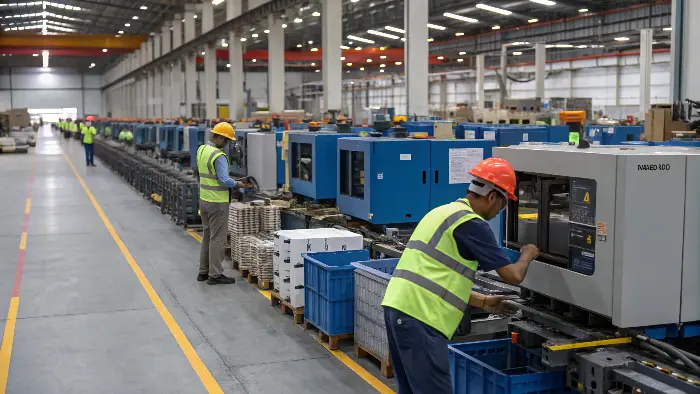
I remember a client who was determined to find the absolute cheapest price possible. They got quotes from China, Vietnam, and India. A factory in Vietnam came in 10% cheaper than the lowest Chinese quote, so they went with them. The initial savings were quickly erased. The Vietnamese factory struggled with the complexity of the mold, leading to delays. Then, shipping costs were higher than anticipated, and a higher percentage of parts failed quality control. In the end, their "total cost" was higher than if they had just gone with our slightly more expensive but far more experienced partner in China. This taught me a valuable lesson: "cheapest" and "best value" are not the same thing.
Understanding the Total Cost of Ownership
The sticker price of a part is only one piece of the puzzle. A smart designer or business owner looks at the Total Cost of Ownership (TCO), which includes all the hidden costs associated with production.
Key Factors in Total Cost
- Labor Cost: This is the most obvious factor. China’s labor costs have been rising but remain significantly lower than in Western countries. Countries like Vietnam and India are currently cheaper than China in this regard.
- Supply Chain Maturity: This is China’s superpower. A mature supply chain means raw materials are cheap and readily available. It also means services like logistics, tooling, and finishing are efficient and competitive. A less developed ecosystem means you might face delays or higher costs for materials and transport.
- Quality and Rework: A cheaper factory might have a higher defect rate. If you have to throw away 5% of your parts, it eats into your savings. The cost of rework or, even worse, a product recall, can be catastrophic.
- Shipping and Tariffs: You have to get the parts from the factory to your warehouse. Consider the cost of ocean or air freight, as well as any import taxes or tariffs that may apply to goods from a specific country.
- Communication and Management: Time is money. If you are spending hours every day dealing with communication issues, misunderstandings, or project management problems because of language barriers or cultural differences, that is a real cost to your business.
Here’s a simplified look at how TCO might play out for a hypothetical project:
| Cost Factor | China | Vietnam | USA |
|---|---|---|---|
| Mold Cost | $10,000 | $9,500 | $40,000 |
| Per-Part Price | $1.00 | $0.90 | $4.50 |
| Shipping & Tariffs (per part) | $0.15 | $0.20 | $0.05 |
| Estimated Defect Rate | 1% | 3% | <0.5% |
| Management Overhead | Medium | High | Low |
| Effective Cost per Good Part | ~$1.16 | ~$1.13 + High Mgmt Cost | ~$4.57 |
As you can see, while Vietnam might look cheaper on paper, the higher defect rate and management overhead can make the "effective" cost much closer to China’s. The USA is much more expensive on paper, but for a low-volume, high-value product, the near-zero defect rate and ease of management could make it a worthwhile investment.
How much does it cost to get a custom injection mold?
You’re ready to bring your product to life, but the cost of the injection mold is a huge question mark that can make or break your entire budget. You get quotes that are all over the place, and it’s hard to know what’s a fair price or what factors are driving the cost. Understanding what goes into a mold’s price will give you the power to get accurate quotes and manage your budget.
A custom injection mold can cost anywhere from $3,000 for a simple, single-cavity prototype mold to over $100,000 for a complex, multi-cavity production mold made from hardened steel. The main factors that determine the price are the part’s size and complexity, the type of steel used for the mold, the number of cavities, and the required lifespan of the mold (how many parts it needs to make). Where the mold is made also has a huge impact on the final cost.
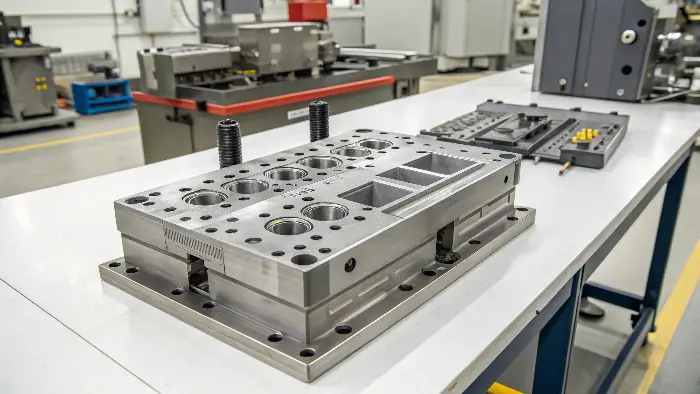
The price of the mold, or "tooling," is often the biggest upfront investment in a plastic injection molding project. I’ve seen founders get sticker shock when they see a quote for $50,000. But I’ve also seen the disaster that happens when they choose a $5,000 quote for a job that clearly requires a more robust tool. A client once insisted on using a cheaper, softer steel for their mold to save about 20% on the upfront cost. The mold was for a high-volume part. It started producing good parts, but after only 50,000 cycles, it began to wear down, and the parts fell out of spec. They had to pay to have a new mold made anyway, completely wiping out their initial savings and causing a major production delay.
Key Mold Cost Drivers
The cost of a mold isn’t arbitrary. It’s based on the materials, time, and labor required to build it. Let’s break down the main components that a toolmaker considers when preparing your quote.
What Determines the Price?
The complexity of your part is the single biggest factor. A simple plastic washer is easy to mold. A complex electronics enclosure with clips, ribs, and textured surfaces requires a much more intricate and expensive mold.
Here is a table that breaks down the primary cost drivers:
| Factor | Low-Cost Scenario | High-Cost Scenario | Impact on Price |
|---|---|---|---|
| Part Complexity | Simple shape, no undercuts, open-and-shut mold. | Intricate geometry, undercuts requiring side-actions or lifters. | Very High |
| Part Size | A small bottle cap. | A large car bumper or storage tote. | High |
| Mold Material | Pre-hardened P20 Steel (lifespan ~50k-100k shots). | Hardened H13 or S136 Steel (lifespan ~1M+ shots). | High |
| Number of Cavities | Single-cavity mold (makes one part per cycle). | 64-cavity mold (makes 64 parts per cycle). | Very High |
| Surface Finish | Standard machine polish (SPI-B1). | High-gloss mirror polish (SPI-A1) or complex texture. | Medium |
A multi-cavity mold costs more upfront but dramatically lowers your per-part price because you are making many parts in the same amount of machine time. It’s a trade-off between your upfront tooling investment and your long-term production cost. Similarly, choosing a hardened tool steel costs more initially but is essential if you plan on making hundreds of thousands or millions of parts. The mold will last longer and require less maintenance over its life.
How much does injection molding cost in China?
You’ve decided that China is the right place for your manufacturing, but you still need to get a handle on the specific costs you’ll face. Without a clear picture of how pricing works, you can’t create an accurate budget for your project or know if the quotes you’re receiving are fair. Learning how Chinese suppliers calculate their prices will help you negotiate more effectively and plan your finances with confidence.
In China, the cost per injection molded part is typically very low, often ranging from a few cents to a few dollars. This price is calculated based on three main components: the cost of the raw plastic material, the machine time needed to produce the part (billed at an hourly rate), and the labor cost for any handling or finishing. Your choice of plastic and the machine cycle time are the biggest variables affecting the final price. Always ask for a detailed quote that breaks down these costs.
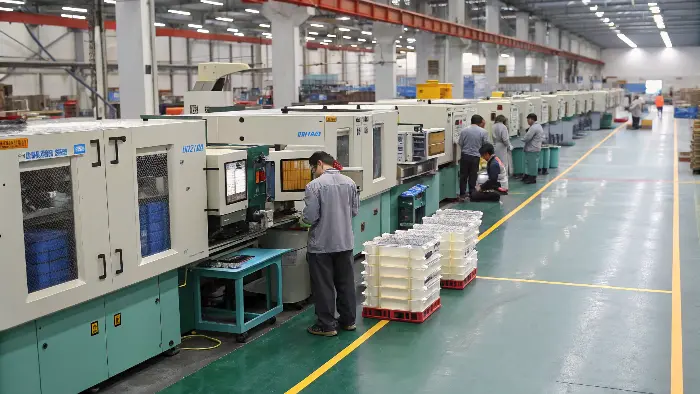
When I work with a new client, one of the first things I do is walk them through a sample quote. It’s important to see beyond the final number and understand the "why" behind it. The per-part price is a direct result of a simple formula: Part Cost = Material Cost + Machine Cost + Labor Cost. I once helped a client optimize their design for manufacturability. By adding a slight draft angle and thickening a few walls, we were able to reduce the cooling time. This shaved just four seconds off the cycle time. It doesn’t sound like much, but over a production run of 500,000 parts, those four seconds saved them over $15,000 in machine time costs alone.
Breaking Down the Per-Part Cost
Let’s dive deeper into the three core elements of your part price. Understanding these will help you have more productive conversations with your suppliers.
1. Material Cost
This is the cost of the plastic pellets used to make your part. It’s calculated based on the total weight of the plastic shot, which includes your part plus the "runner" system that delivers the plastic to the mold cavities.
- Formula:
Material Cost = (Part Weight + Runner Weight) * Price per Kilogram of Plastic - Key Variables: The type of plastic you choose makes a huge difference. A common material like ABS might cost $2/kg, while a high-performance engineering plastic like PEEK could cost over $80/kg. Your supplier buys this material in bulk, and the price fluctuates with the market.
2. Machine Cost
This is the cost of running the injection molding machine. Factories have different-sized machines (measured in clamping force "tonnage"), and they charge an hourly rate for using them. The bigger the machine, the higher the hourly rate.
- Formula:
Machine Cost = (Cycle Time in Seconds / 3600) * Machine Hourly Rate - Key Variables: Cycle time is king. This is the total time it takes to close the mold, inject the plastic, cool the part, open the mold, and eject the part. A faster cycle time means you make more parts per hour, which lowers the machine cost allocated to each part.
| Cycle Time (seconds) | Parts per Hour | Machine Cost per Part (at $40/hr rate) |
|---|---|---|
| 20 | 180 | $0.22 |
| 40 | 90 | $0.44 |
| 60 | 60 | $0.67 |
3. Labor Cost
This covers the cost of a person to oversee the machine, inspect the parts, and perform any secondary operations like trimming, assembly, or special packaging. While automation is increasing, labor is still a key component, especially for more complex assembly projects. This cost is usually bundled into the overall machine rate but can be broken out for labor-intensive tasks.
Conclusion
China is a world leader in injection molding, but success isn’t guaranteed just by sending your design files there. The key is to work with suppliers in the established industrial hubs like the Pearl River Delta. While China often offers the best value, the "best" country truly depends on your project’s specific needs for cost, quality, and complexity. Understanding the drivers behind both mold and per-part costs empowers you to budget effectively and choose the right partner.
